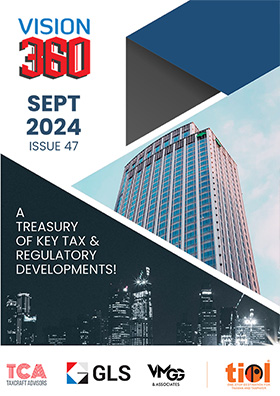I-T - Whether when assessee purchases a ready made property it will be entitled to claim Sec 54 benefits for cost of improvement incurred even after purchase of Unit - YES: ITAT
By TIOL News Service
AHMEDABAD, JULY 22, 2013: THE issues before the Bench are - Whether when the assessee purchases a ready made property it will not be entitled to claim Sec 54 benefits for the cost of improvement incurred after purchase of the Unit and Whether it is rational to presume that no capital expenditure can be incurred once the assessee moves into a newly-purchased property for habitation. And the verdict goes in favour of the assessee.
Facts of the case
The assessee is a retired salaried employee. The assessee sold his house property for a consideration of Rs 1,50,86,452, and, after deducting indexed cost of acquisition which worked out to Rs 52,09,597 from sale proceeds, the assessee earned capital gains of Rs 98,76,855. Thereafter the assessee purchased another property for Rs 71,94,570, and claimed to have spent on another Rs 15,48,773 on its improvement. However, the Assessing Officer took the stand that the cost of improvement’ was to be allowed as a deduction in the hands of the transferor and not in the hands of the transferee. Accordingly, the Assessing Officer required the assessee to show cause as to why deduction claimed for cost of improvement not be disallowed. It was submitted by the assessee that “the cost of improvement, as per section 55(1)(b), in any other case, means all the expenditure of capital nature incurred in making any addition or alteration to the capital asset by the assessee, after it became his property”. The AO noted that the assessee had purchased a ready made property, that since the assessee had sold his house in August 2006, whereas the new property was purchased in May 2006, these facts did not indicate that the house was not in a livable condition at the point of time of purchase. The Assessing Officer further noted that the expenses were claimed to have been incurred by the assessee till 31st March 2007, i.e. much after purchasing the house. The Assessing Officer rejected assessee’s claim for the cost of improvement in the new house property being taken into account for computation of Section 54 benefit. On appeal, the CIT(A) noted that the assessee had sold his house in August 2006 and since the assessee had incurred expenses of only Rs 25,315 till August 2006, it could not be believed that the entire expenditure of Rs 15,48,773 was made to make the new house property inhabitable. The CIT(A) thus upheld the action of the Assessing Officer.
On appeal, the Tribunal held that,
++ Revenue has put emphasis on the fact that as the original house property was sold by the assessee in August 2006, it cannot be believed that new house property was not habitable till September 2007. This observations proceed on the assumption that on sale of old house property, assessee had to essentially shift in the new house. However, this overlooks the uncontroverted fact that the assessee had, during the period August 2006 to June 2007, lived in a residential unit leased from one Shri Atul Verma. All the lease rental payments were made by cheque and a copy of the lease agreement, evidencing this arrangement, was also placed in the paperbook. A copy of the brokerage note, in connection with the said lease agreement, was also placed on record. The DR could not point out any errors or inconsistencies in this material;
++ in view of the matter, the very foundation of assumption by the Revenue to the effect that the new house property was habitable, at the point of time when it was purchased, is unsustainable. It is also important to bear in mind the fact that merely because a person has moved into the new property does not mean that the construction work is complete. One can, after all, move in a new property even when work is partly complete, and it does happen in the real life;
++ section 54(1) of the Act, provides that, subject to the provisions of sub-section (2), where in the case of an assessee being an individual or a Hindu undivided family, the capital gain arises from the transfer of a long-term capital asset, being buildings or lands appurtenant thereto, and being a residential house, the income of which is chargeable under the head Income from house property� (hereafter in this section referred to as the original asset), and the assessee has within a period of one year before or two years after the date on which the transfer took place purchased, or has within a period of three years after that date constructed, a residential house, then, instead of the capital gain being charged to income-tax as income of the previous year in which the transfer took place, it shall be dealt with in accordance with the following provisions of this section, that is to say, (i) If the amount of the capital gain is greater than the cost of the residential house so purchased or constructed (hereafter in this section referred to as the new asset), the difference between the amount of the capital gain and the cost of the new asset shall be charged under section 45 as the income of the previous year; and for the purpose of computing in respect of the new asset any capital gain arising from its transfer within a period of three years of its purchase or construction, as the case may be, the cost shall be nil; or (ii) If the amount of the capital gain is equal to or less than the cost of the new asset, the capital gain shall not be charged under section 45 and for the purpose of computing in respect of the new asset any capital gain arising from its transfer within a period of three years of its purchase or construction, as the case may be, the cost shall be reduced by the amount of the capital gain;�
++ the cost of purchases does include any capital expenditure incurred on the assessee on such property to make it habitable. As long as the costs are of such a nature as would be includible in the cost of construction in the normal course, even if the assessee has bought a readymade unit and incurred those costs after so purchasing the readymade unit as per his taste and requirements, the costs so incurred will form integral part of the qualifying amount of investment in the house property. The use of words purchased or construed does not mean that the property can either be purchased or constructed and not a combination of both the actions. A property may have been purchased as a readymade unit but that does not restricts the buyer from incurring any bonafide construction expenditure on improvisation or supplementary work. Accordingly, in our considered view, as long as the assessee has incurred the bonafide construction expenditure, even after purchasing the unit, the additional expenses so incurred would be eligible for qualifying investment under Section 54. However, as the relevant factual verifications have not been carried out by any of the authorities, the matter is restored to the file of the Assessing Officer for fresh adjudication.
(See 2013-TIOL-632-ITAT-AHM)














